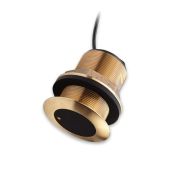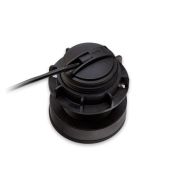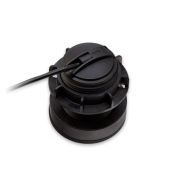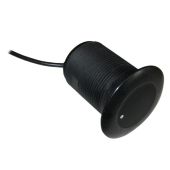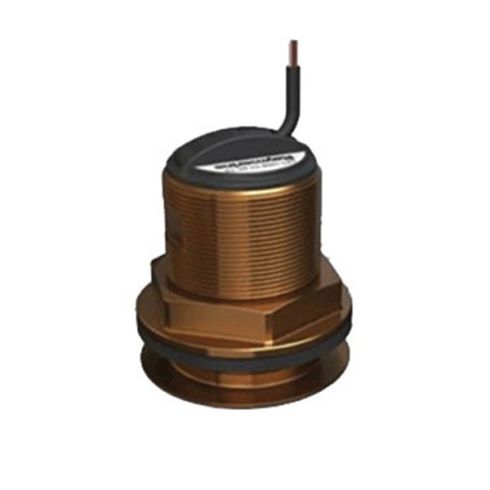



By buying this product you can collect up to 28 Citimarine points. Your cart will total 28 points that will be converted into a voucher of $2.80 towards your next purchase! Must be logged in to collect points.
CPT-S (Bronze) 20° CHIRP Sonar Transducer
Raymarine CPT-S (Bronze) 20° CHIRP Sonar Transducer is a device for DownVision™, SideVision™ & Conventional Sonar. It is bronze housings are recommended for fiberglass or wood hulls.

Save $9.99 with Code
Reference: E70341
In Stock: 5
$289.99
Free Shipping on Orders over $99
*On Orders Over $99; Not including: Hazardous, Oversize, Greater than (+150 lbs.) or Freight Advertised Products. FEDEX Ground Shipping / Continental US Only
Shipping Calculator
Raymarine CPT-S (Bronze) 20° CHIRP Sonar Transducer

The CPT-S (Bronze) is preferable to plastic for wooden hulls because the expansion of wood could damage a plastic transducer and cause a leak. Installation of a stainless steel housing in a metal hull requires an insulating fairing.
CPT-S 20° (BRONZE) TRANSOM FEATURES
Installation: Through Hull
Material: Bronze
Max Depth (Ft): 900
Frequency (KHz): CHIRP Fishfinder
Beam Width (L/H): 25°
Records: Depth
Supported Deadrise / Transom Angles: 15-25° Deadrise
Frequency
The precision with which the fishfinder detects the background and other objects is also determined by the frequency selected for the depth you are looking at. The CPT-S can be tuned to two different frequencies: 200 kHz (high) or 50 kHz (low).
200 kHz (high)

200 kHz works best in water at less than 200 feet / 60 meters and when you need to get an accurate reading while moving at a higher speed. High frequencies give you more detail to detect very small objects but in a smaller portion of water. High frequencies typically show less noise and less unwanted echoes while showing better target definition.
50 kHz (low)
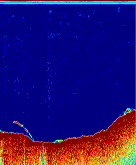
For deep water, 50 kHz is preferred. This is because water absorbs sound waves at a slower rate for low frequencies and the signal can travel farther before it becomes too weak to use. The beam angle is wider at low frequencies, which means that the output pulse extends further and is more suitable to see a larger area under the boat. However, this also means less definition and separation of the target and a greater susceptibility to noise. Although lower frequencies can see deeper, they may not give you a clear idea of the bottom.
.gif)
Mud, soft sand and plant life in the bottom absorb and disperse sound waves, which results in a thicker bottom image. Rock, coral and hard sand reflect the signal easily and produce a thinner lower screen. This is easier to see using the 50 kHz configuration, where the lower throughputs are wider.

An empirical rule would be to use the 200 kHz configuration for a detailed view at about 200 feet and then change to 50 kHz when you want to look deeper. Better yet, show both views side by side on a split screen for both perspectives.

The CPT-S (Bronze) is preferable to plastic for wooden hulls because the expansion of wood could damage a plastic transducer and cause a leak. Installation of a stainless steel housing in a metal hull requires an insulating fairing.
CPT-S 20° (BRONZE) TRANSOM FEATURES
Installation: Through Hull
Material: Bronze
Max Depth (Ft): 900
Frequency (KHz): CHIRP Fishfinder
Beam Width (L/H): 25°
Records: Depth
Supported Deadrise / Transom Angles: 15-25° Deadrise
Frequency
The precision with which the fishfinder detects the background and other objects is also determined by the frequency selected for the depth you are looking at. The CPT-S can be tuned to two different frequencies: 200 kHz (high) or 50 kHz (low).
200 kHz (high)

200 kHz works best in water at less than 200 feet / 60 meters and when you need to get an accurate reading while moving at a higher speed. High frequencies give you more detail to detect very small objects but in a smaller portion of water. High frequencies typically show less noise and less unwanted echoes while showing better target definition.
50 kHz (low)

For deep water, 50 kHz is preferred. This is because water absorbs sound waves at a slower rate for low frequencies and the signal can travel farther before it becomes too weak to use. The beam angle is wider at low frequencies, which means that the output pulse extends further and is more suitable to see a larger area under the boat. However, this also means less definition and separation of the target and a greater susceptibility to noise. Although lower frequencies can see deeper, they may not give you a clear idea of the bottom.
.gif)
Mud, soft sand and plant life in the bottom absorb and disperse sound waves, which results in a thicker bottom image. Rock, coral and hard sand reflect the signal easily and produce a thinner lower screen. This is easier to see using the 50 kHz configuration, where the lower throughputs are wider.

An empirical rule would be to use the 200 kHz configuration for a detailed view at about 200 feet and then change to 50 kHz when you want to look deeper. Better yet, show both views side by side on a split screen for both perspectives.
